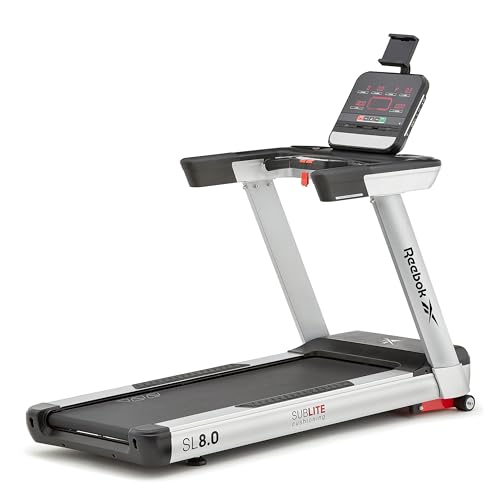The Rise of Non-Electric Running Machines: A Sustainable Approach to Home Fitness
Recently, the fitness industry has seen a significant shift towards sustainable and energy-efficient equipment. Among the plethora of choices, non-electric running devices have actually taken a specific niche for themselves, interesting fitness enthusiasts who value eco-friendliness, performance, and cost-effectiveness. This post explores the advantages of non-electric running machines, compares them with their electric counterparts, and answers often asked concerns about these ingenious fitness tools.
What is a Non-Electric Running Machine?
A non-electric running machine, frequently described as a manual treadmill, is a piece of exercise equipment that permits users to walk or run without the need for electricity. Instead of depending on a motor, these makers utilize the user's own physical effort to move the running belt. This function not only makes them ecologically friendly but also motivates a more natural and engaging workout experience.
Secret Features of Non-Electric Running Machines
| Function | Description |
|---|---|
| Self-Powered | Runs without electricity; users power the treadmill through their movements. |
| Adjustable Incline | A lot of designs offer incline settings to boost workout strength. |
| Compact Design | Generally lighter and more space-efficient than electric treadmills. |
| Low Maintenance | Less electronic components implies easier upkeep and longevity. |
| Sturdiness | Built with robust materials to withstand intense use; frequently more rugged than electric designs. |
Benefits of Non-Electric Running Machines
1. Eco-Friendly
Being self-powered, non-electric running machines do not contribute to carbon emissions or energy usage. For environmentally conscious customers, this element aligns with a way of life that prioritizes sustainability.
2. Affordable
Without the need for electricity, users can save money in the long run, both in regards to energy costs and the expense of maintenance. The lack of complex electronics means less likelihood of breakdown, possibly conserving on repairs.
3. Engagement and Intensity
Due to the manual nature of operation, users engage more muscles during the workout. This can lead to a more extreme cardiovascular workout, as the effort is completely determined by the user's pace and force.
4. Versatility
Non-electric running devices appropriate for numerous exercises, from light jogging to high-intensity interval training (HIIT). Furthermore, numerous models permit users to adjust the incline, which can assist target various muscle groups and improve workout efficiency.
5. Noise-Free Operation
Unlike electric treadmills that may have motors running, non-electric machines operate quietly, making them perfect for home use where noise might be an issue.
Comparison: Non-Electric vs. Electric Running Machines
To provide a clearer understanding, the table below compares the primary functions of non-electric and electric running machines:
| Feature | Non-Electric Running Machines | Electric Running Machines |
|---|---|---|
| Power Source | Manual (user-powered) | Electric (motor-driven) |
| Noise Level | Peaceful | Can be loud due to the motor |
| Area Requirement | Often more compact | Can be bulkier due to the motor |
| User Control | Overall control over rate and intensity | Speed and incline settings adjusted electronically |
| Upkeep | Low, primarily mechanical checks | Greater, due to electrical elements |
| Initial Cost | Normally lower | Usually higher price point |
Selecting the Right Non-Electric Running Machine
When choosing a non-electric running machine, prospective purchasers should think about several aspects:
Key Considerations
- Material Quality: Look for makers developed with long lasting components that can endure routine usage.
- Weight Capacity: Check the weight limits to ensure it can accommodate all intended users.
- Adjustable Features: Opt for models that provide adjustable slopes and other personalized settings to boost workout variety.
- Footprint Size: Ensure the machine fits conveniently in your designated workout area.
- User Reviews: Research feedback from other buyers to evaluate reliability and performance.
Popular Non-Electric Running Machines
Here are some well-regarded non-electric running makers available in the market:
- AssaultFitness AirRunner: Known for its durable construct and flexibility for various workouts.
- TrueForm Runner: Offers a special curved design for a more natural running experience.
- Woodway 4Front: High on durability and includes an unique slat belt for smooth operation.
- XGear Fitness Manual Treadmill: Budget-friendly with adjustable incline choices.
- Sunny Health & & Fitness Manual Treadmill: Compact and simple to utilize for newbies.
Frequently Asked Questions About Non-Electric Running Machines
Q1: Are non-electric running makers suitable for beginners?
A1: Yes, non-electric running makers can be suitable for newbies. Users can control their rate easily and slowly increase their intensity as their physical fitness levels enhance.
Q2: How do I maintain a non-electric running machine?
A2: Maintenance usually involves examining belt stress, lubing the moving parts, and guaranteeing that all parts are safe. This is typically less requiring than maintaining electric treadmills.
Q3: Can I perform high-intensity exercises on a non-electric running machine?
A3: Absolutely! Manual Treadmill Cheap -electric makers are ideal for high-intensity workouts, as they rely entirely on the user's effort, which can easily be increase.
Q4: Are non-electric running machines suitable for all physique?
A4: Most non-electric running machines can accommodate a range of physique, however it's essential to check the particular weight limit and dimensions of each design.
Q5: Do non-electric running makers need any setup?
A5: Most non-electric running devices require minimal setup, and some may be ready to utilize ideal out of the box.
Non-electric running devices provide a compelling alternative to traditional electric treadmills, marrying sustainability with efficient exercise options. As fitness enthusiasts end up being more mindful of their environmental impact, these makers are likely to increase in appeal. With their myriad advantages and differed choices, non-electric running devices can effortlessly suit a health-oriented way of life, making them a worthwhile factor to consider for anybody seeking to boost their fitness journey.

